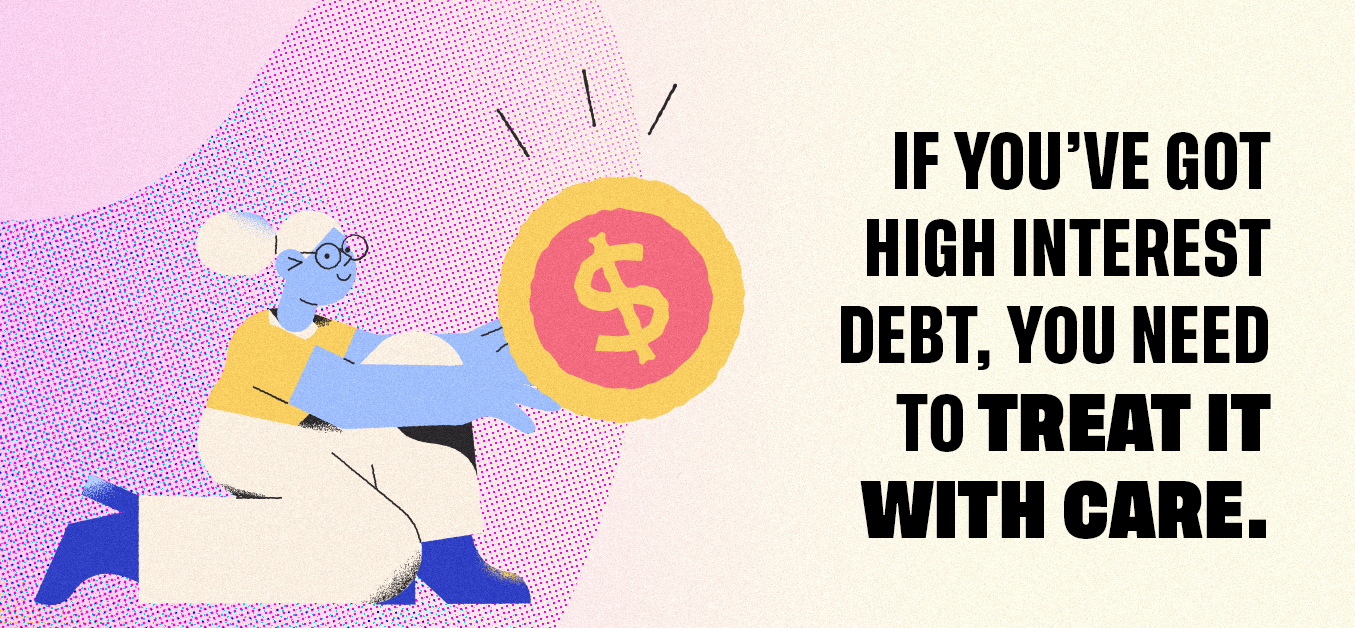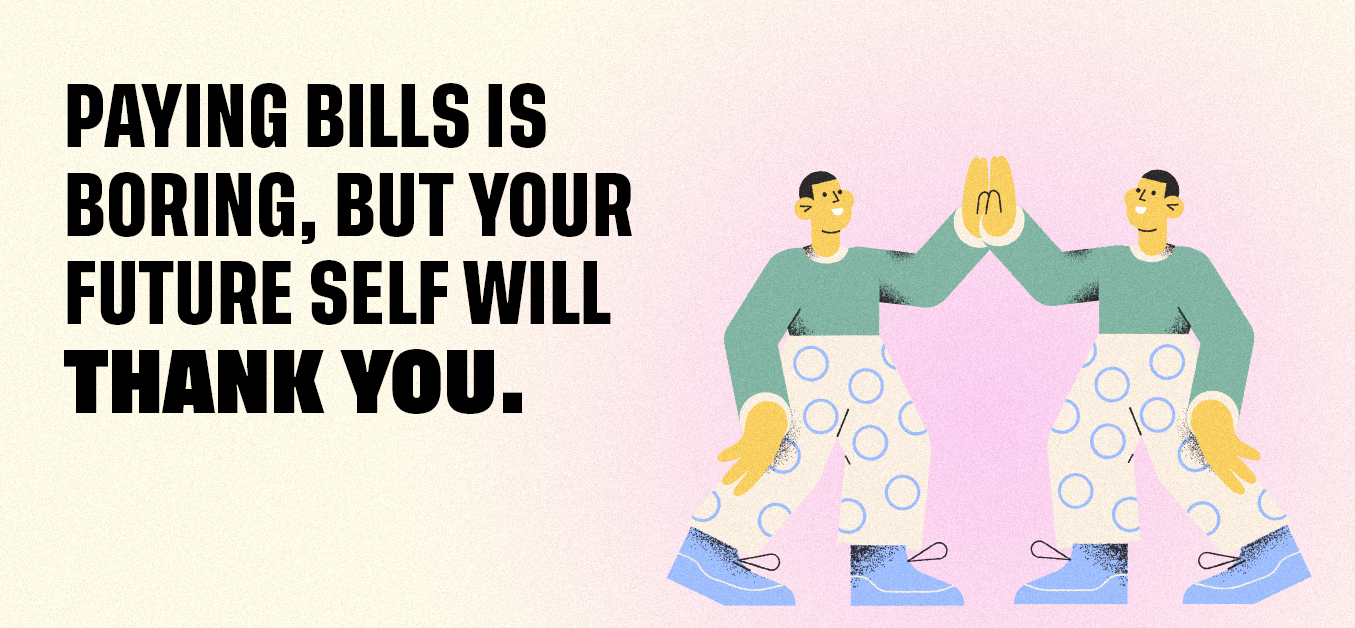Budgeting Tips For College Students
Or, how not to constantly feel totally broke
Are you a college kid on a shoestring budget? Been there. Done that. It’s not fun.
A lot of the folks on Team Mogo can relate. College was great, but often, we were strapped for cash and constantly stressing about it. After a while—say, four years or so—that can take a serious toll on your mental health.
Is it possible to feel financially secure when you’ve only got $4.12 in your bank account? Kinda, yes. The key is developing good budgeting habits that can give you peace of mind.
Start Strong: the 50/30/20 Budget
If this is your first time living on your own (read: without parental supervision) you might find it difficult to know where your money is going every month. Whether you’ve got regular income or not, these fancy space-agey tap-to-pay smart phone wallets can make it a little too easy to spend.
You can avoid that slippery spending slope by creating a budget, sticking to it, and maintaining great visibility of your finances.
Our favourite budget is the 50/30/20 Budget. In college, your cash flows can be so irregular that it can be hard to use a granular budget to account for every cent. The 50/30/20 Budget is a ratio based budget which is flexible and grows with you as your circumstances change.
Each number corresponds to a percentage of your income. 50% pays for your “needs”, things like food and rent. 30% pays for your “wants”, like Netflix, concerts, nights out and coffees on campus. The last 20% goes to your financial goals, like maybe paying down high interest debt.
This budget can make it easy to know where your money is going, and that knowledge can bring great comfort. Visibility is half the battle when you’re on a tight budget.
Pay Down High Interest Debt

High interest debt is the real bogeyman. It is the thing that goes bump in the night. The monster that lived under your bed as a kid? It pales in comparison to the horrors of compounding charges on high interest debt.
If you’ve got high interest debt, treat it with care. Even if you’re on a very low and strict budget, not making regular payments onto your debt can hurt your credit score and could set you up for a lifelong cycle of debt.

Look at your debt and plot how long it will take you to pay it off. If possible, double your minimum payments (minimum payments only really tackle your interest charges, and will likely keep you in debt longer than you need to be, which costs more!). And be sure to never, ever miss a payment.
Paying bills is boring, but your future self will thank you.
Get An Accountability Buddy
If you struggle with financial discipline and regulating your spending, get an accountability buddy. This could be a friend you trust, a family member, or even an app or spending card you really like.
If your buddy is a person, set up weekly or monthly financial meetings to review your spending and upcoming costs. Buy a cheap box of donuts from Tim Hortons and an $8 bottle of wine and make a date of it.
We’d also suggest you consider appointing the Mogo Visa* Platinum Prepaid Card as your official accountability buddy (or even your accountability sidekick, if you want to double up!). To complement your weekly or monthly meetings, your MogoCard will send you instant notifications every time you complete a transaction to remind you how much you’ve spent and how much you’ve got left.
| GET MY FREE MOGOCARD |
It’s a prepaid card, so you can’t go into debt while using it. And if you always know how much cash you’ve got in your account, it can be way easier to stick to your budget.
Win, win, win.
Take Advantage of Student Rates
You pay so much for tuition, you’d better be taking advantage of every student rate you can get your hands on.
Tons of stores, services, and event companies will offer student rates to make their products more accessible to young people. We’re not saying you should buy stuff you don’t need just because there’s a student rate, but you should always be looking for possible savings.
Popular student rates in Canada can be found at places like:
- Apple;
- Samsung;
- Spotify;
- Adobe; and even
- Air Canada.
It may only be 10% or 20%, but every penny saved on big ticket items counts. Never pay full price if you don’t have to!
Plan For Textbook and School Costs
If you’re on a tight budget, school is probably the biggest ticket item you’re paying for. Every semester, tuition fees and textbooks are liable to take a huge chunk out of your income.
So plan for it. This is where that handy 50/30/20 Budget comes in. Save up ahead of time to make sure when your payment deadline rolls around, you’ll be ready and able to cough up the cash (however begrudgingly).
The whole textbook issue can be very frustrating, because while you certainly need those materials to learn, they shouldn’t cost you an arm and a leg every damn semester.
And yet, friends. And yet. Every semester, we shell out hundreds for poorly bound “new editions” of texts written by our own professors. Seems… like a scam? Like a conflict of interest? Like higher education might be, in part, a cash grab?
Some people might use sketchy websites to download free PDF versions of textbooks to get around these exorbitant costs. Those people probably found lists of those sketchy websites by googling something like “free textbook downloads” and clicking the first option. But you shouldn’t do that. It’s immoral. And you could get a computer virus. So don’t try any funny business. Got it?
Up Your Spend Control with Mogo

Student life can be hard enough. The last thing you need is financial worry. While many will have to accumulate student debt to get through college, sticking to a tight budget and keeping great tabs on your finances can seriously help in the long run.
Central to this plan is developing a flexible budget that’s easy to understand, like the 50/30/20, and sticking to it. Directing that 20% to paying off high interest debt or saving for your next tuition instalment can help keep your credit score in good shape and your debt low.
Taking advantage of student friendly offers out there can help free up cash for your rainy day fund, or tackling that debt even faster. And as for needlessly expensive textbooks, well—save up for those too, because yeah, while you probably could download them for free from the internet, isn’t it way nicer to have a super heavy hard copy version?
Need help mastering your spend control? MogoCard can help. Sign up for free today!
Now make good choices! And don’t do anything we wouldn’t do, eh?
| GET MY FREE MOGOCARD |
This blog is provided for informational purposes only.
*Trademark of Visa International Service Association and used under licence by Peoples Trust Company. Mogo Visa Platinum Prepaid Card is issued by Peoples Trust Company pursuant to licence by Visa Int. and is subject to Terms and Conditions, visit mogo.ca for full details. Your MogoCard balance is not insured by the Canada Deposit Insurance Corporation (CDIC). MogoCard means the Mogo Visa Platinum Prepaid Card.
1-Based on an online survey of active MogoCard users by Mogo Inc. conducted between July 13, 2021 and July 16, 2021, with 1,446 respondents to a combination of multiple choice and fillable text box questions. 91% of respondents agreed that the MogoCard can help them better control their spending. 66.5% of respondents reported that they were spending less on discretionary spending now that they were using the MogoCard, with respondents reporting that they believed to have an average savings of $201 per month (based on 902 respondents who specified an amount and excluding 60 respondents who did not specify any amount).